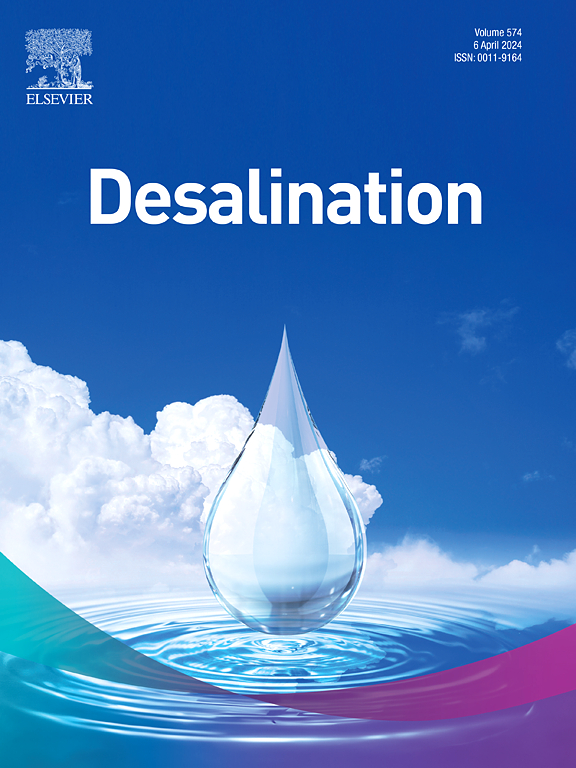Effectiveness of capacitive deionization for the removal of soluble phosphorus and fluoride with a Mg/Al co-doped porous biochar electrode during the process of water-washing of phosphogypsum
IF 8.3
1区 工程技术
Q1 ENGINEERING, CHEMICAL
引用次数: 0
Abstract
During the process of purifying phosphogypsum (PG) and realizing its resource utilization, a large amount of wastewater will be generated, which will not only seriously damage the ecological environment, but also be a huge waste of water resources. In this work, the self-built capacitive deionization (CDI) system with a Mg/Al co-doped porous biochar electrode has been innovatively introduced into the process of water-washing of PG. The microstructures of the modified biochar electrode are investigated by FESEM, XRD, Raman, FTIR, BET and XPS thoroughly. The effects of operating voltage, feed flow rate, electrode plate spacing and pH of initial solution on the removal of soluble phosphorus and fluoride ions and the adsorption mechanism of this CDI system are systematically studied. The CDI system demonstrate satisfactory adsorption capacity for soluble phosphorus and fluoride ions, with adsorption capacities of 49.8 mg·g−1 and 16.8 mg·g−1 respectively. In addition, the fitting results of isothermal adsorption model and kinetic model for the adsorption data of soluble phosphorus and fluoride ions indicate that the CDI adsorption towards soluble phosphorus and fluoride ions is a multifactorial heterogeneous diffusion process with chemical adsorption. Based on this, in this paper, the wastewater generated by the actual process of water-washing of PG is treated by CDI and used for PG phosphogypsum circulating water washing. Our results exhibit that the contents of soluble phosphorus and fluoride ions in phosphogypsum washed with circulating water are 0.017 % and 0.006 % respectively, which reach the Chinese national standard. Meanwhile, the washing water can be used again for washing PG after CDI treatment, so as to achieve the purpose of water recycling and water conservation.

求助全文
约1分钟内获得全文
求助全文
来源期刊

Desalination
工程技术-工程:化工
CiteScore
14.60
自引率
20.20%
发文量
619
审稿时长
41 days
期刊介绍:
Desalination is a scholarly journal that focuses on the field of desalination materials, processes, and associated technologies. It encompasses a wide range of disciplines and aims to publish exceptional papers in this area.
The journal invites submissions that explicitly revolve around water desalting and its applications to various sources such as seawater, groundwater, and wastewater. It particularly encourages research on diverse desalination methods including thermal, membrane, sorption, and hybrid processes.
By providing a platform for innovative studies, Desalination aims to advance the understanding and development of desalination technologies, promoting sustainable solutions for water scarcity challenges.
 求助内容:
求助内容: 应助结果提醒方式:
应助结果提醒方式:


